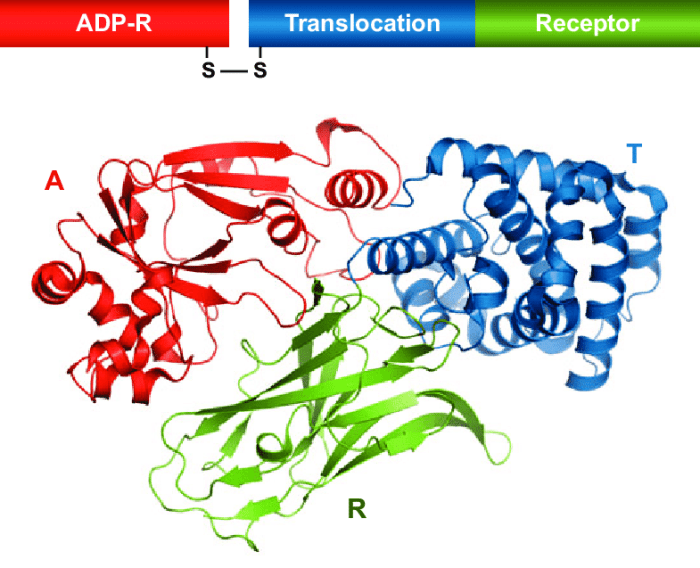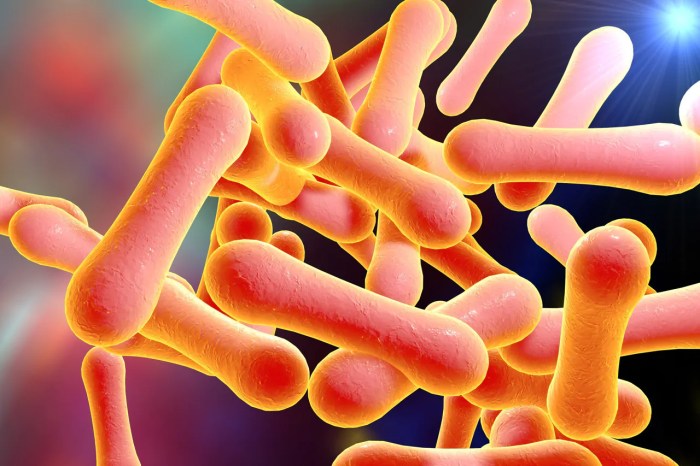Which of the following is not a membrane disrupting toxin? This question delves into the fascinating world of toxins, exploring the unique mechanisms of action employed by membrane-disrupting toxins and contrasting them with those that do not disrupt membranes. This article aims to shed light on the diverse array of toxins, their targets, and their implications in biological systems.
Membrane-disrupting toxins, as the name suggests, target and disrupt the integrity of cell membranes, leading to a cascade of cellular consequences. In contrast, non-membrane disrupting toxins adopt distinct strategies, targeting intracellular molecules or processes to exert their effects.
Membrane-Disrupting Toxins
Membrane-disrupting toxins are a diverse group of toxins that share the ability to damage the lipid bilayer membranes of cells, leading to cell death or dysfunction. These toxins are produced by a wide variety of organisms, including bacteria, fungi, and plants, and they play important roles in pathogenesis and host-pathogen interactions.
Mechanisms of Action
Membrane-disrupting toxins can act on different components of the cell membrane, including phospholipids, proteins, and carbohydrates. Some toxins, such as pore-forming toxins, create pores in the membrane, allowing the leakage of ions and small molecules across the membrane. Other toxins, such as detergent-like toxins, disrupt the lipid bilayer by interacting with the hydrophobic core of the membrane, causing membrane lysis.
Still other toxins, such as cytolysins, target specific membrane proteins, leading to cell death.
Types of Membrane-Disrupting Toxins

There are many different types of membrane-disrupting toxins, each with its own unique mechanism of action and target site. Some of the most common types of membrane-disrupting toxins include:
- Pore-forming toxins: These toxins create pores in the cell membrane, allowing the leakage of ions and small molecules across the membrane. Examples include diphtheria toxin and streptolysin O.
- Detergent-like toxins: These toxins disrupt the lipid bilayer by interacting with the hydrophobic core of the membrane, causing membrane lysis. Examples include lysenin and melittin.
- Cytolysins: These toxins target specific membrane proteins, leading to cell death. Examples include perforin and granzyme B.
Consequences of Membrane Disruption
Membrane disruption can have a number of consequences on cell function. The leakage of ions and small molecules across the membrane can disrupt the cell’s electrochemical gradient, leading to cell death. Membrane disruption can also lead to the release of cellular contents, including proteins and DNA, which can trigger an immune response.
In addition, membrane disruption can interfere with the function of membrane-bound proteins, such as ion channels and receptors, which can disrupt cell signaling and metabolism.
Examples of Membrane-Disrupting Toxins

| Toxin | Source | Target Membrane | Effects |
|---|---|---|---|
| Diphtheria toxin | Corynebacterium diphtheriae | Plasma membrane | Creates pores in the membrane, leading to leakage of ions and cell death |
| Streptolysin O | Streptococcus pyogenes | Plasma membrane | Creates pores in the membrane, leading to leakage of ions and cell death |
| Lysenin | Listeria monocytogenes | Phagosomal membrane | Disrupts the lipid bilayer, leading to membrane lysis and cell death |
| Melittin | Honeybees | Plasma membrane | Disrupts the lipid bilayer, leading to membrane lysis and cell death |
| Perforin | Cytotoxic T cells | Plasma membrane | Creates pores in the membrane, leading to leakage of ions and cell death |
Toxins That Do Not Disrupt Membranes: Which Of The Following Is Not A Membrane Disrupting Toxin
Not all toxins disrupt membranes. Some toxins target other cellular components, such as proteins or nucleic acids. These toxins can have a variety of effects on cell function, including inhibition of protein synthesis, DNA damage, and cell death.
Examples of toxins that do not disrupt membranes include:
- Shiga toxin: This toxin inhibits protein synthesis by binding to the ribosome.
- Ricin: This toxin damages DNA by binding to the 28S rRNA of the ribosome.
- Botulinum toxin: This toxin inhibits neurotransmitter release by binding to the SNARE proteins on the presynaptic membrane.
Applications and Implications

Membrane-disrupting toxins have a number of applications in research and medicine. They can be used to study the structure and function of cell membranes, and they can also be used to develop new therapeutic agents. For example, pore-forming toxins have been used to develop antibiotics and antitumor drugs, and detergent-like toxins have been used to develop detergents and cleaning agents.
However, the use of membrane-disrupting toxins also raises a number of ethical concerns. These toxins can be highly toxic, and they can have a number of adverse effects on human health. Therefore, it is important to carefully consider the risks and benefits of using these toxins before using them in research or medicine.
Questions Often Asked
What is the primary mechanism of action for membrane disrupting toxins?
Membrane disrupting toxins typically insert themselves into cell membranes, forming pores or disrupting the lipid bilayer, leading to loss of membrane integrity and function.
How do non-membrane disrupting toxins exert their effects?
Non-membrane disrupting toxins target intracellular molecules or processes, such as enzymes, DNA, or protein synthesis, to disrupt cellular functions.
What are some examples of membrane disrupting toxins?
Examples include hemolysins, phospholipases, and pore-forming toxins.
What are some examples of non-membrane disrupting toxins?
Examples include diphtheria toxin, ricin, and botulinum toxin.